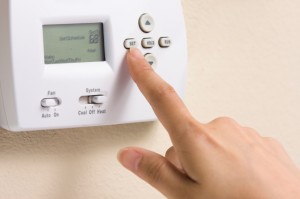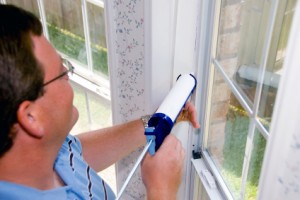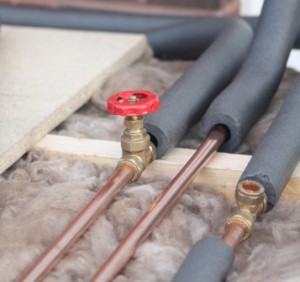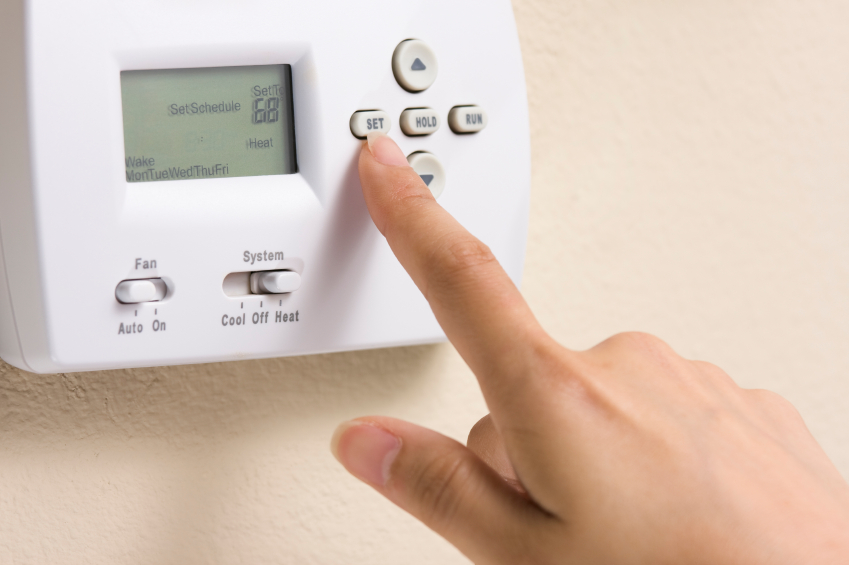 This article is the second in a series of three articles that highlight steps you can take to improve the efficiency of your home. The first article focused on completing a Home Energy Audit.
This article is the second in a series of three articles that highlight steps you can take to improve the efficiency of your home. The first article focused on completing a Home Energy Audit.
The first step in becoming energy efficient is to complete a Home Energy Audit, which can be done through Thurston Energy’s HomePLUS Energy Evaluation. Thurston Energy will connect you with a trained energy expert to evaluate your home’s energy performance, using high-tech diagnostics such as blower door tests and infrared photos that identify air leaks and heat loss. Once the audit is complete, the homeowner is given a numerical Energy Performance Score (EPS) as well as a detailed report that will outline ways to improve their home’s efficiency.
If your home is losing energy, you can focus on making upgrades to improve the efficiency of your home. Some energy efficiency projects are simple and can be completed by the homeowner, other are more complex and may require the help of a contractor.
The repairs that provide the highest return on investment are also the easiest and least expensive to complete include simply replacing weather stripping and air sealing around the house in areas where air infiltrates into your home, such as around plumbing penetrations and windows and doors. Replacing windows, the most expensive energy efficiency upgrade a homeowner can undertake, has a low return on investment and should be lower on the list of energy efficiency priorities. If you do have inefficient windows, you can use insulating drapes or window film to help reduce their draftiness. If you live in an historic home, you can have storm windows made for your existing windows for a fraction of the cost of replacing them.
If you want to calculate an exact return on investment for various upgrades take a look at these fact sheets provided by Thurston Energy. The penny pincher in the family will love to pour over these numbers to determine exactly what impact different upgrades will have on reducing the household energy bill.
Start with Air Sealing, Weather Stripping, Insulation and Behavior Modification
 Start by replacing weather stripping and caulking around the house. Energystart.gov has a great Do-It-Yourself guide available here that explains with photos and text how to seal a leaky house step-by-step, starting with weather stripping and moving on to insulation
Start by replacing weather stripping and caulking around the house. Energystart.gov has a great Do-It-Yourself guide available here that explains with photos and text how to seal a leaky house step-by-step, starting with weather stripping and moving on to insulation
Next, replace or increase the insulation in your floors and the attic. Replacing or adding wall insulation is more expensive and difficult, and the return on investment should be considered before moving forward with this repair.
Behavior modifications can have the biggest impact in energy use and result in the most savings. Some very simple things to do include:
- Install and learn how to properly use a programmable thermostat. Programmable thermostats allow greater control over the time and temperature in which air is forced throughout the house, which reduces electricity use and costs.
- Avoid temporarily changing the settings to increase the temperature as this is inefficient and not effective. For example, returning home from work and manually overriding the thermostat is ultimately a waste of energy.
- Look into investing in a “smart” or “learning” thermostat that can adjust temperature settings based on when you are home and the temperatures you prefer.
- Another easy change to make is to think about how you cook. Microwaves and toaster ovens use 75% less energy than using an oven, for example.
 Finally, consider upgrading your heating unit. One of the most efficient systems available is a ductless heat pump which heats a home without using ductwork. This means that you are only paying for the heat you use and not heat that gets lost in the crawlspace or the attic. There are other efficient systems available as well. A good contractor can provide you with return on investment data which is calculated by comparing the system that you now use with a new system. Many homeowners find that a ductless system pays for itself in three to five years.
Finally, consider upgrading your heating unit. One of the most efficient systems available is a ductless heat pump which heats a home without using ductwork. This means that you are only paying for the heat you use and not heat that gets lost in the crawlspace or the attic. There are other efficient systems available as well. A good contractor can provide you with return on investment data which is calculated by comparing the system that you now use with a new system. Many homeowners find that a ductless system pays for itself in three to five years.
Thurston Energy is a great resource that can provide you with additional information on home efficiency and easy, affordable upgrade options.

















































